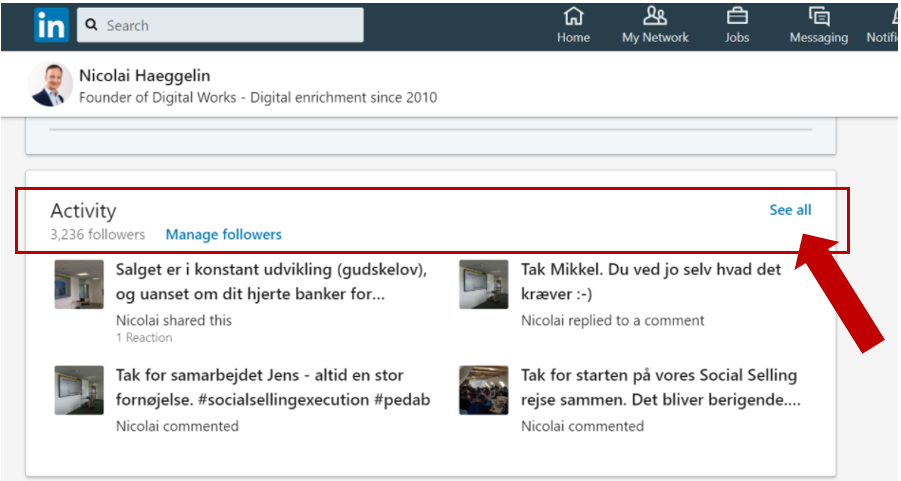A professional LinkedIn profile should thoroughly express who you are, your skills, competencies, and employment history. In this article, we present you with 10 important things to remember for appearing professional on your personal LinkedIn profile.
1. Do you want people to see your profile-updates?
Once in a while, LinkedIn notifies you that one of your connections added new skills to their profile or changed their existing profile information. In some cases, it makes sense to let people know that you, for example, switched to a new company or changed something in your summary. However, not everything is entertaining for your connections.
Luckily, you can control this yourself by following these simple steps:

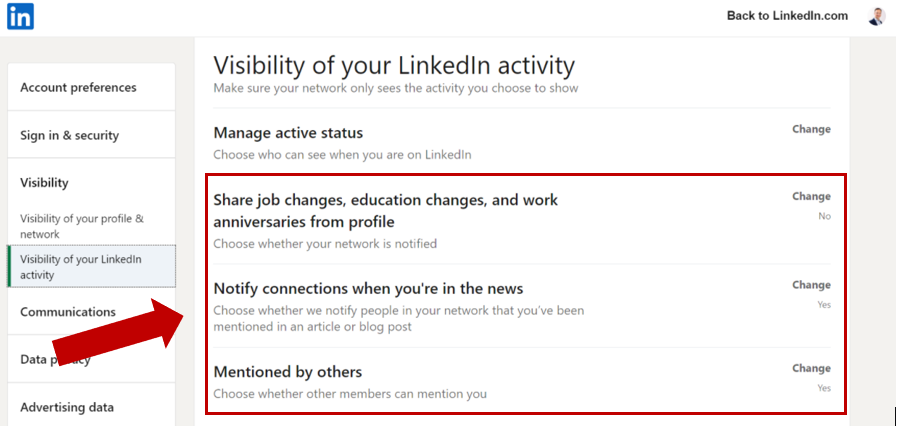
You can also change the setting here.
2. Remember a professional profile picture
According to LinkedIn, having a profile picture results in 14 times more profile showings than if you don’t have a picture. At the same time, it is also your profile picture that makes sure that your customers, collaborators, future colleagues, new “visitors”, etc. can recognize you. Thus, remember to add a profile picture, but make sure it is professional – no photos from vacations, parties, or wearing sunglasses.
Tip: LinkedIn has added a feature that allows you to add filters to your profile picture.
See below how to change or add your profile picture:
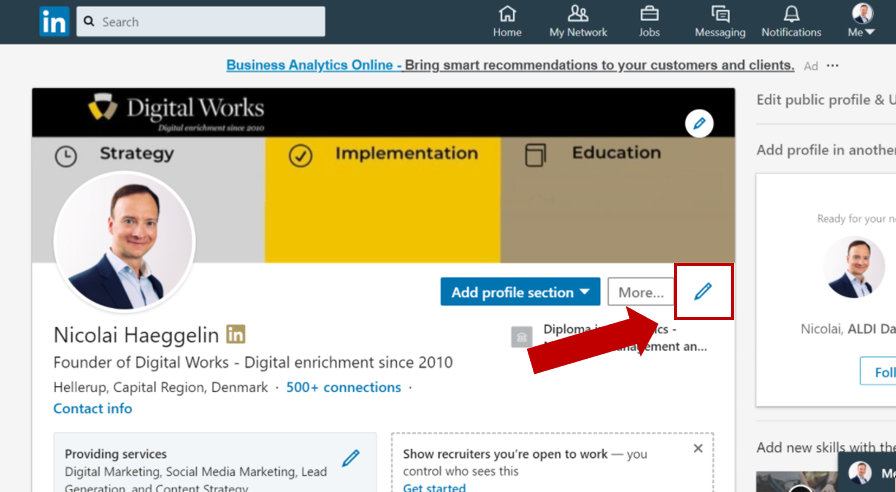
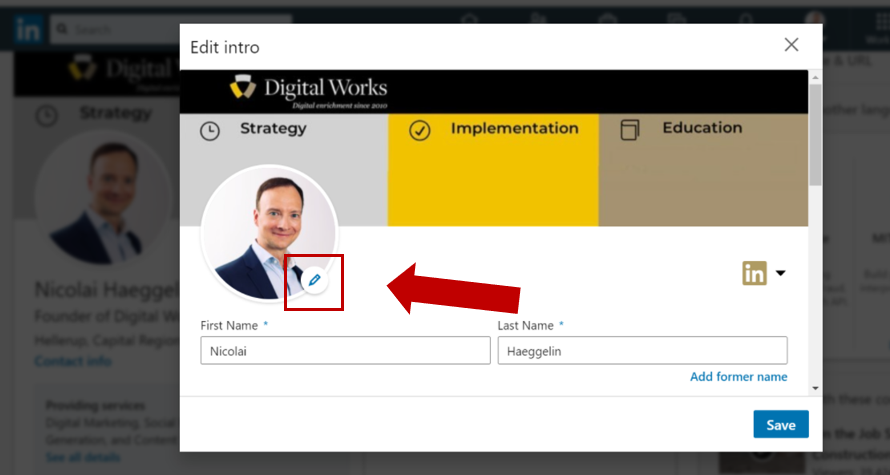
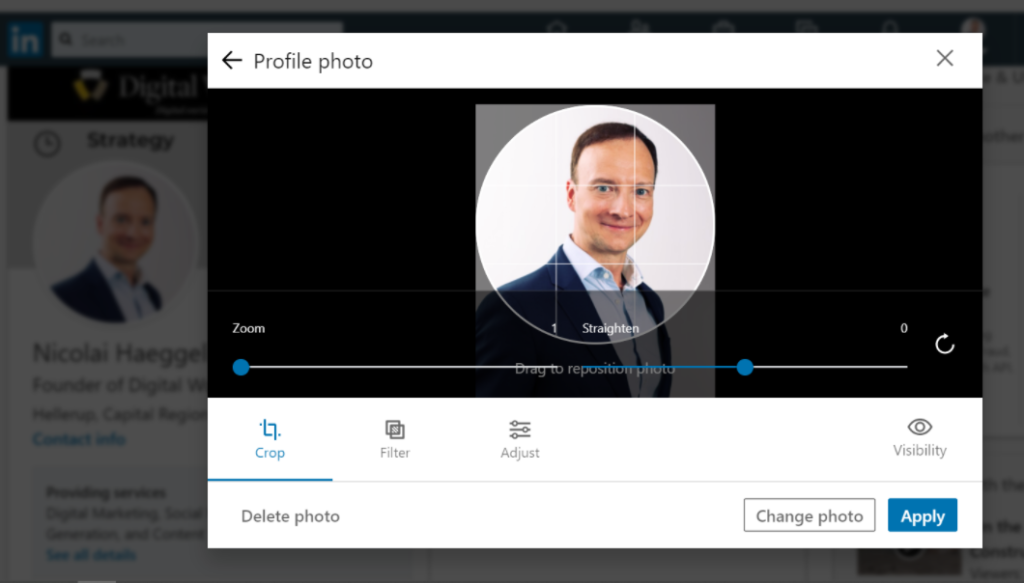
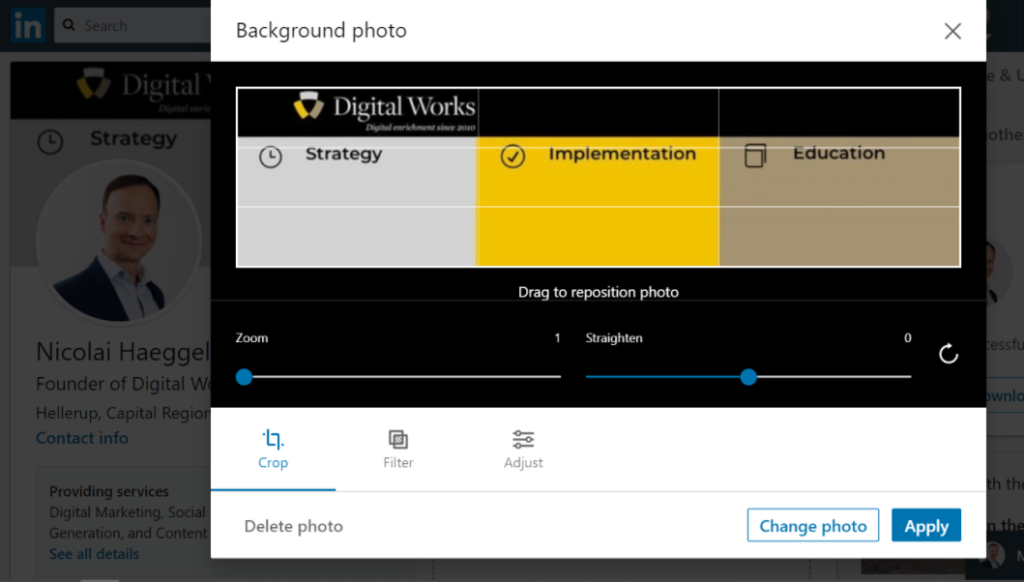
3. Your “Public profile URL”
The “Public profile URL” is the direct link to your personal LinkedIn profile. A “clean” URL is “prettier” and makes it easier to link to your personal LinkedIn profile. After making your URL “clean”, you can use it in your auto signature, resume, or PowerPoint presentations without creating any doubt about who the link refers to.
You can change your URL by following this step below:

4. Write a “spot-on” summary
It is important to complete your summary. In your summary, you can explain your competencies, results, and experiences. The summary is also known as an “elevator pitch” – a short presentation of you and your professional qualifications. It can also be a good idea to implement keywords that will make you easier to find in a search for future connections. Some users also write contact information in this section.
Tip: Consider setting up your summary in Word for a nice layout and copy-paste it into LinkedIn.
You can edit your summary by following this step below:
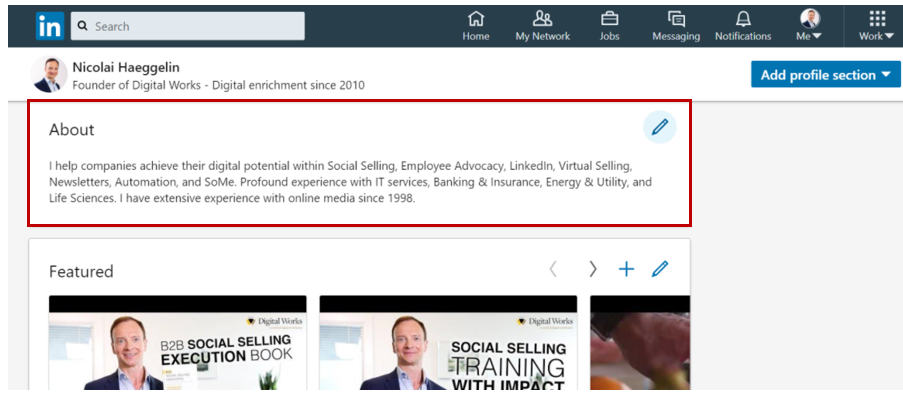
Also read: 8 functions that you probably do not know exists on LinkedIn
5. Your professional headline
Many users have their title and company in their headline, but a title does not say much about you. Instead, we recommend, in addition to the title and company, to write some keywords that help you narrow down your professional focus. Your headline could also be your slogan or a short description of how you can help other people. There is no right or wrong answer for what to write in your headline, but remember to implement either keywords or a slogan that makes you easier to search for.
Remember: You only have 120 characters available, so your headline needs to be “spot-on”.
See how to edit your headline below:
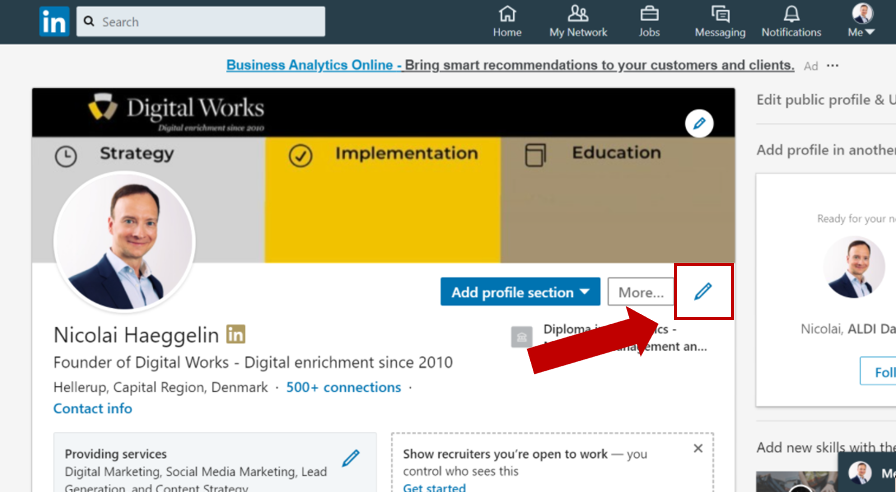
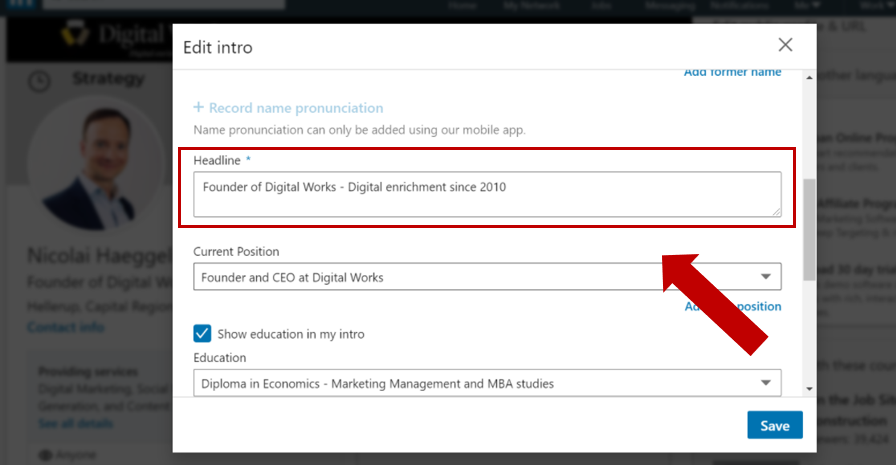
6. More content on your profile
You might already have several elements of your professional work in your personal LinkedIn profile, but you might want to narrow down your experience and competencies even more. Regardless, LinkedIn provides many features that allow you to deepen your professional history, such as voluntary work, certifications, courses, etc.
Tip: To make your profile more visual, add visual content like presentations, links, pictures, or video in your summary or under experience – this will make your profile even more exciting.
To find the functions, follow these steps:
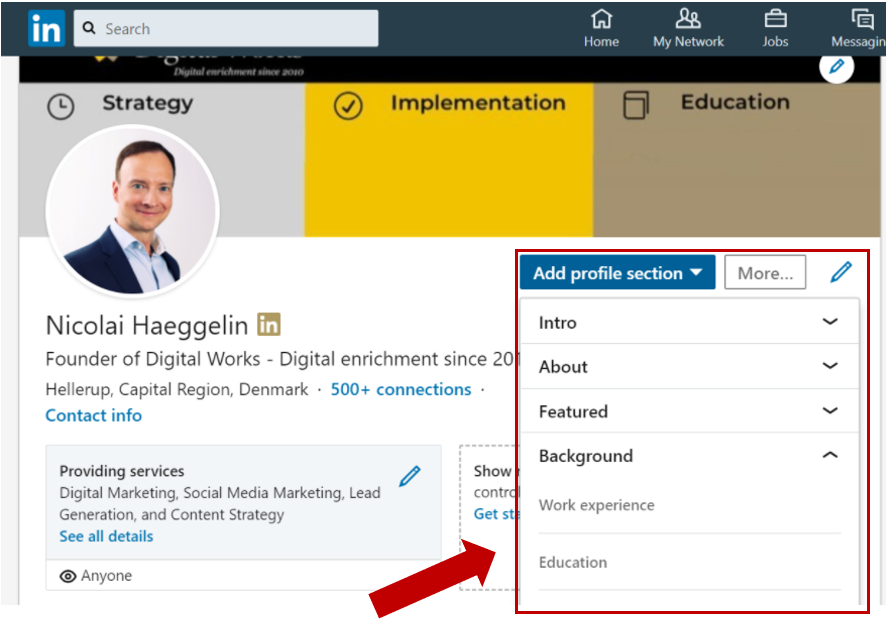
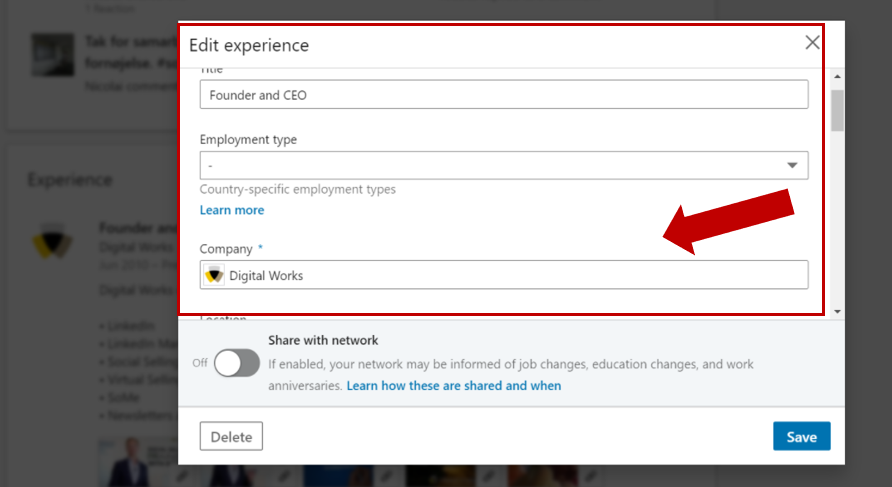
7. Add description under “experience”
The first thing you will have to do is to make sure you fill in the right workplace, title, and employment period – both for current and previous jobs. The next step is to fill in your job descriptions – just like in a resume. The description could include your tasks, responsibilities, projects you have participated in, and the results you have achieved in the job.
The job descriptions for your most recent positions are the most important to fill out. You don’t need a long description of an ancient job.
Tip: Remember to implement keywords in your different descriptions.
See how to edit your work descriptions here:
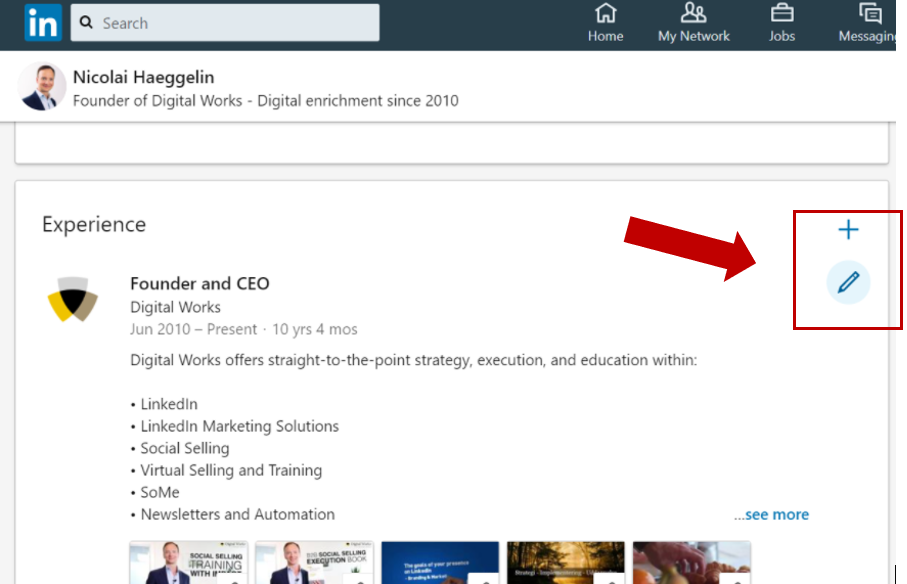
8. Attach your past and current jobs to the right companies
When you attach your current and previous jobs to the right companies, the company’s logo will appear next to the title. At the same time, this creates a direct link from your profile to the Company Page, and your profile will be visible from the Company Page. If your profile is not already affiliated with the right Company Page, this is because the company that you work for or worked at does not have a Company Page.
To do this: Go to your personal profile and scroll down to the employment where you want to add a company. From there, click on the pencil next to the chosen employment, and then click on the company drop-down menu. Start typing your company’s name and choose the right one from the list and finish with “Save”.
See how it’s done below:


9. Show off your skills
There are shared opinions about “Skills” – especially due to the well-known ‘endorsements’. Endorsements are a great way to create an overview of your competencies for visitors, while skills work well with LinkedIn’s search function and should be thought of as keywords.
Tip: Only select the most relevant skills that you would like to emphasize, and remember that you are always able to edit the order of which your skills appear, delete, and add new ones.
An example of how this works:
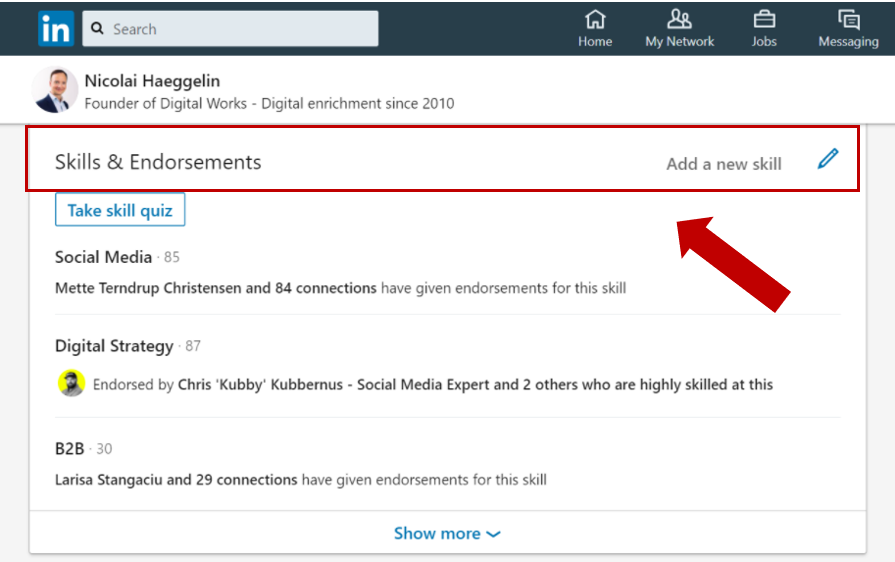
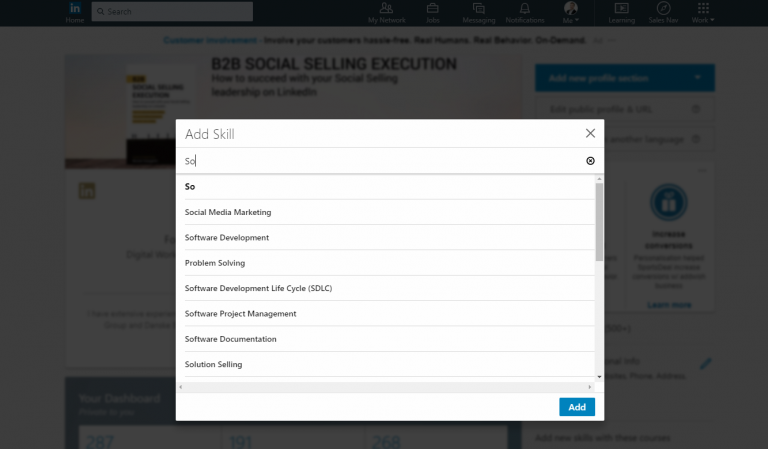
10. The beloved enrichment
Remember to enrich your connections with, e.g., exciting articles, events, and jobs that you know could be in their interest and create insights. Keep in mind that you can enrich in several ways – both by sending personal messages with special content or by sharing content with your entire network in an update. It is essential to keep the relevance in mind and ask yourself if the content is valuable to your network?
When you share content, you can see your latest activity on your profile. See where below:
